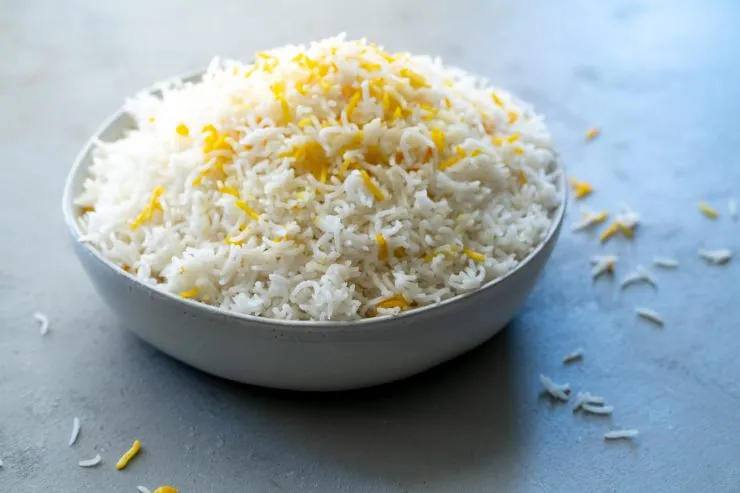Rice is a staple food for many cultures worldwide, known for its versatility, affordability, and ease of preparation. However, not all types of rice are equal when it comes to their impact on heart health. For individuals with heart conditions or those aiming to maintain a heart-healthy diet, choosing the right type of rice is crucial. In this article, we delve into the different varieties of rice and highlight which ones are most beneficial for heart patients.
Basmati Rice: A Heart-Friendly Option
One of the most popular types of rice globally, Basmati rice is favored for its fragrant aroma, long grains, and distinct flavor. From a nutritional standpoint, Basmati rice is a healthier choice compared to other varieties. It has a lower glycemic index (GI) compared to short-grain white rice, meaning it has a milder impact on blood sugar levels. This attribute is particularly beneficial for individuals with diabetes or those at risk of developing diabetes, as managing blood sugar is essential for heart health.
Furthermore, Basmati rice contains resistant starch, a type of carbohydrate that resists digestion in the small intestine. Resistant starch acts similarly to dietary fiber, promoting digestive health and aiding in weight management, both of which contribute to overall heart wellness.
Brown Rice: Nutrient-Rich and Heart-Healthy
Brown rice is another excellent choice for heart patients due to its higher nutrient content compared to white rice. Unlike white rice, which undergoes extensive processing that strips away the bran and germ layers, brown rice retains these nutrient-rich components. The bran and germ layers of brown rice are abundant in vitamins, minerals, and dietary fiber, all of which are beneficial for heart health.
The high fiber content in brown rice promotes satiety, aids in regulating cholesterol levels, and helps maintain stable blood sugar levels. Additionally, brown rice contains essential minerals such as magnesium and potassium, which play vital roles in cardiovascular function. Magnesium helps regulate blood pressure and supports muscle and nerve function, while potassium helps counteract the effects of sodium on blood pressure.
Wild Rice: A Nutrient-Packed Alternative
While technically not a true rice variety but rather the seed of aquatic grasses, wild rice is often included in discussions about rice due to its similar culinary uses. Wild rice is a nutrient powerhouse, boasting higher protein content and lower calories than most other types of rice. Its distinct nutty flavor and chewy texture make it a favorite in salads, pilafs, and hearty dishes.
From a heart health perspective, wild rice stands out for its impressive nutrient profile. It is rich in antioxidants, including flavonoids and anthocyanins, which help combat oxidative stress and inflammation in the body—both factors that contribute to heart disease. Incorporating wild rice into a heart-healthy diet adds variety and boosts nutrient intake, supporting overall cardiovascular wellness.
Black Rice: The Forbidden Rice With Heart Benefits
Black rice, also known as forbidden rice, was once reserved for Chinese royalty due to its rarity and nutritional value. Today, it is gaining popularity for its unique color, nutty flavor, and health-promoting properties. Like wild rice, black rice is not a true rice but rather a type of heirloom rice with a dark, almost black hue.
What sets black rice apart is its high anthocyanin content, which gives it its distinctive color and provides potent antioxidant benefits. Anthocyanins have been linked to improved heart health by reducing inflammation, supporting blood vessel function, and lowering cholesterol levels. Including black rice in a heart-healthy diet adds not only visual appeal to meals but also a range of cardiovascular benefits.
Quinoa: A Protein-Rich Grain Alternative
While not technically a rice variety, quinoa is often considered a grain and is a popular alternative to rice for its nutritional value. Quinoa is a complete protein source, meaning it contains all nine essential amino acids necessary for human health. This makes quinoa an excellent choice for individuals, including heart patients, looking to increase their protein intake while reducing their reliance on animal-based proteins.
In addition to its protein content, quinoa is rich in fiber, vitamins, and minerals such as magnesium, phosphorus, and iron. These nutrients contribute to heart health by supporting muscle function, regulating blood pressure, and aiding in oxygen transport in the blood.
Conclusion
In conclusion, selecting the right type of rice is crucial for individuals prioritizing heart health. Basmati rice, brown rice, wild rice, black rice, and quinoa are all excellent options that offer various nutritional benefits. Basmati and brown rice are notable for their lower glycemic index and higher fiber content, while wild rice and black rice provide antioxidants that promote cardiovascular wellness. Quinoa stands out for its complete protein profile and diverse nutrient content.
When incorporating rice into a heart-healthy diet, it’s essential to focus on portion control, cooking methods, and overall dietary balance. Opting for whole grains, such as brown rice and wild rice, over refined grains like white rice, can contribute significantly to heart health. Additionally, pairing rice with lean proteins, colorful vegetables, and heart-healthy fats creates balanced and nutritious meals that support overall well-being.
By making informed choices about the types of rice consumed and adopting a balanced approach to nutrition, individuals can contribute to their heart health and overall quality of life.


